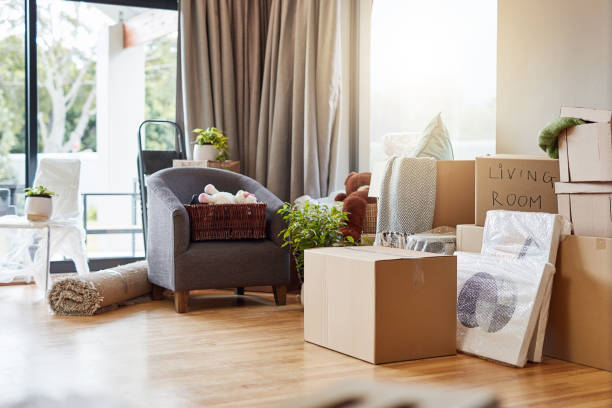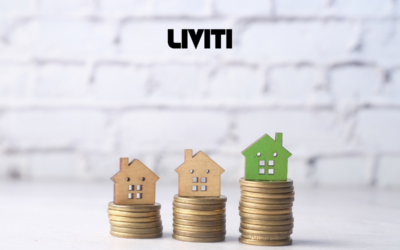Bigger isn’t always better. Yes, you read it right! Sometimes, less is more. You will be surprised to see how popular the tiny home trend and downsizing are getting recently.
But downsizing your home is not an instant process. It requires time, effort and preparation! That’s why we’ve put up a guide to show you how to downsize your home at ease and live clutter-free.
What is Downsizing?
Downsizing is defined as making something smaller *obviously*.
People downsize for many reasons. It could be to save money or to get rid of unused space. However, depending on your goals, downsizing can be the right move at any stage of life. In this article, we focus on downsizing for individuals who are entering retirement and downsizing their property. Meaning moving into a smaller home than the one that they currently live in.
Liviti’s Step by Step Guide to Downsizing in retirement
1. Determine if you need to Downsize
There are many reasons why retirees may wish to downsize their properties. In fact, the Australian Housing and Urban Research Institute have found that 26% of Australians aged 55 and over have downsized, whilst 29% have considered it.
Some reasons why some retirees should downsize may include:
- To move in closer proximity to their family
- Financial considerations. Having more disposable cash flow and retirement savings
- Minimise housework. Smaller houses would eliminate time, effort and funds that retirees would have to usually exhort in their bigger homes- giving them more time for other things.
Do any of these reasons appeal to you? This may be your sign to downsize.
2. Consider the Advantages of Downsizing
There are many advantages to consider when you sell your family home and move into a small apartment or home.
Especially in the area of money and financial advantages. Where money can become more freed up, leaving you to not solely rely on the age pension.
Downsizer contributions to superannuation
When selling your family home in an attempt to downsize, you may be able to contribute money from the sale towards your superannuation. However, to be eligible, you have to be over 65 years old and have owned the property for over 10 years. If you meet these criteria you can possibly add $300,000 to your superannuation from selling your home. A positive plus is that you would no longer be required to meet work test requirements and not have your annual contribution caps affected.
Less Maintenance
As mentioned previously, a smaller home or smaller apartment means decreased home maintenance needs. This means retirees can exert less effort into the daily tasks of cleaning and maintaining the home. This allows them to have more free time to do as they wish and have more comfortable retirement plans.
Free up some cash/equity
According to The Association of Superannuation Funds of Australia, it has been estimated that for a retired couple to live comfortably they require $35,369 a year or over a grand total of $700,000. For those who want some extra money retirement downsizing plans can enable that. Even though your new home may be smaller, not as luxurious or in as that great of a location you are trading off for a positive long term financial impact on the money in your bank accounts.
Lower your living expenses
Heating and cooling take up using around 40% of all household energy according to the Australian Government. When you sell your family home savings can be seen to increase and allow retirees to save money. With a smaller house, there is potential to lower the cost of housework by potentially thousands of dollars- essentially giving you a better retirement income.
New Neighbourhood
Change is not always a bad thing. Sometimes change is just the thing you need. Moving to a new neighbourhood can be nerve-racking however it also means that you can meet new people and develop new friendships and memories with different people. Giving life some fresh excitement.
3. Consider the Disadvantages of Downsizing
Although the idea of downsizing in retirement can sound appealing. Like anything that’s good, there is always a bad side. These disadvantages should be considered when deciding to move during retirement.
Possibility of less space
An obvious disadvantage that comes along with moving into a smaller property is less space. This is an important consideration that must be taken into account. With less space, hard decisions like giving away personal items in your existing home will occur.
Expenses
In order to save more money, you first have to spend money. When moving houses there are lots of costs involved, these include; real estate agent fees, stamp duty, legal fees and as well as other fees associated with buying and selling in the market. Additionally, the purchase and removal of furniture and hidden costs are other costs to note.
New Neighbourhood (Yes, its both an advantage & disadvantage)
Although being in a new neighbourhood can be a blessing in disguise it can also be a disadvantage. Retirees could have a close bond with their existing neighbourhood, considering all the years they have been together, and saying goodbye could prove to be difficult. Another potential thing to consider is that the neighbourhood could not be of a friendly nature nor the most welcoming.
4. Start the Downsizing process
Does downsizing sound like the right path for you?
It’s time to get started.
When moving out of your home, sorting out personal belongings can be the hardest part.
Having years of accumulated items and having to decide what to keep and what to part ways with is difficult.
That’s why it is important to set goals and deadlines for yourself to keep yourself from getting distracted or taking your time.
5. Make a plan
With downsizing, there are many things to consider and do. That is why it is important to make a plan to keep you on track.
Downsizing does not happen overnight, it is something that gets worked up to and can take as long as 2 years time.
Looking at all the clutter in your home can be daunting. So taking it room by room is a great start. Taking on guest bedrooms and the garage first and leaving essential living areas like your bedroom for last is a great course of action.
Get your property valued
When trying to sell your family home it is important to get expert advice and get your property valued. This is in order to get the most value from your property and end up with more money in your bank account as your home is one of your largest financial assets.
Choose a suitable location based on your lifestyle (or aspiring lifestyle)
After living life in a particular way or pattern for the span of your adult life, with work being the main time consumer of your week, it is important for your retirement planning that you choose a location that suits your need.
With this extra free time that you are gaining from retirement, you should consider a location where you are located in closer proximity to family – that is if you are planning to visit them often. Another thing would be living close to where your hobbies lay.
An example of such may include being at a golf course or a local pool if swimming is your hobby – or whatever it may be.
6. Document your current home
Starting paperwork while downsizing your home and moving into a different property will help with the process of parting ways *sobbed*
This may include taking pictures of the property and how it looked, prior to packing up shop. Just to keep something to look back to and reminisce about the place that you once called home.
Taking pictures can also help with decorating your new smaller home. You may like how your pictures are hung up on the wall and use the same layout in your new home.
It is also important to measure and record the dimensions of all your furniture to see if it is compatible with the new property or if it needs to be given away.
7. Be ruthless and realistic with material belongings
Deciding which personal items to keep and let go of the rest is a difficult process.
Downsizing expert Anna Novak says “Downsizing involves letting go of 70 to 80 per cent of the belongings it took you 20 to 30 years to accumulate”.
Yes, we know it is a very scary number! So it is vital to be true to yourself and get rid of belongings that you no longer need. A great rule of thumb is that if you have not used that item at all in the past year, it is time to wave goodbye to it.
8. Consider hiring an expert
Downsizing your home can be a complicated process. In order to offload the stress and headaches, it could be a great idea to speak with an expert or financial adviser. These experts could cater to you based on your personal financial situation and provide personal financial advice.
There is risk involved with downsizing as there is with any major decisions in life and hiring an expert can help you take the best course of action.
9. Check in with your emotions
Leaving your home can be an emotional experience.
Moving on from the place you once called home – having created many memories can often leave feelings of nostalgia, sadness and anxiety. Having your home be part of your life for so many years and having to depart from it is not easy.
That is why it is essential to talk to someone about the feelings you are experiencing. Even if it just be a phone call.
It may be helpful to ask someone to help you pack away your belongings as well. This will allow you to verbalise the memories you have created with it as you either pack it away or let it go.
10. Selling your current home
Selling your home can be a very complex process.
Things to consider and understand include interest rates, tax considerations and tax implications, capital gains tax, income test and assets test and how they all can potentially affect you.
Be mindful of how selling your home could impact Government benefits
Previously if you were to deposit $253,750 as a single or $380,500 as a couple as a result of sale proceeds, you would be subject to the assets test and as a result, your age pension would slowly decrease.
However, since 2018 as part of government benefits, a downsizer contribution has allowed Australians aged over 65 to deposit $300,000 (or $600,000 for a couple) into their superannuation fund from the sale of their real estate. All without going through the assets test – making downsizing a more considerable option for Australians.
Consider if you need a storage unit or similar
Some retirees may not be able to partway with some personal items so a storage unit is an option that should be considered.
Items that you may put into your storage unit may include:
- large or antique furniture
- memorabilia
- family heirlooms
- sentimental pieces – art pieces, letters, photos
However, it is important to note that having a storage unit would become an ongoing cost.
11. Find a new home
A great thing about retirement is the freedom you get in choosing your new home. It is important to choose a home that suits your retirement income, space wanted and as well as location.
When finding a new home it is important to consider moving somewhere that is most important to you. That being your loved ones, the ocean or wherever it may be.
Discovered that you are not quite ready to downsize?
Changed your mind? Is downsizing not for you?
Going through personal belongings and getting rid of items that are no longer wanted or needed is something to still consider. With the extra money in your bank accounts, you can use it for home repairs, upgrades or even invest in other properties.
Other options to consider are:
- Renting out space – Consider renting out a bedroom
- Dual occupancy – Look into the possibility of renting out half the house and living in the other half.
However, before you jump into any of these options it is important to look at the taxing implications of these actions and the potential effects they may have on your government benefits.
Conclusion
Downsizing can be a complex process, but it is something all retirees should consider.
If downsizing for retirement is something you would like to do speak to our team and let us help you get well prepared. Liviti is here to give you a hand!
Get in touch with us today or call us at (02) 9056 4311










